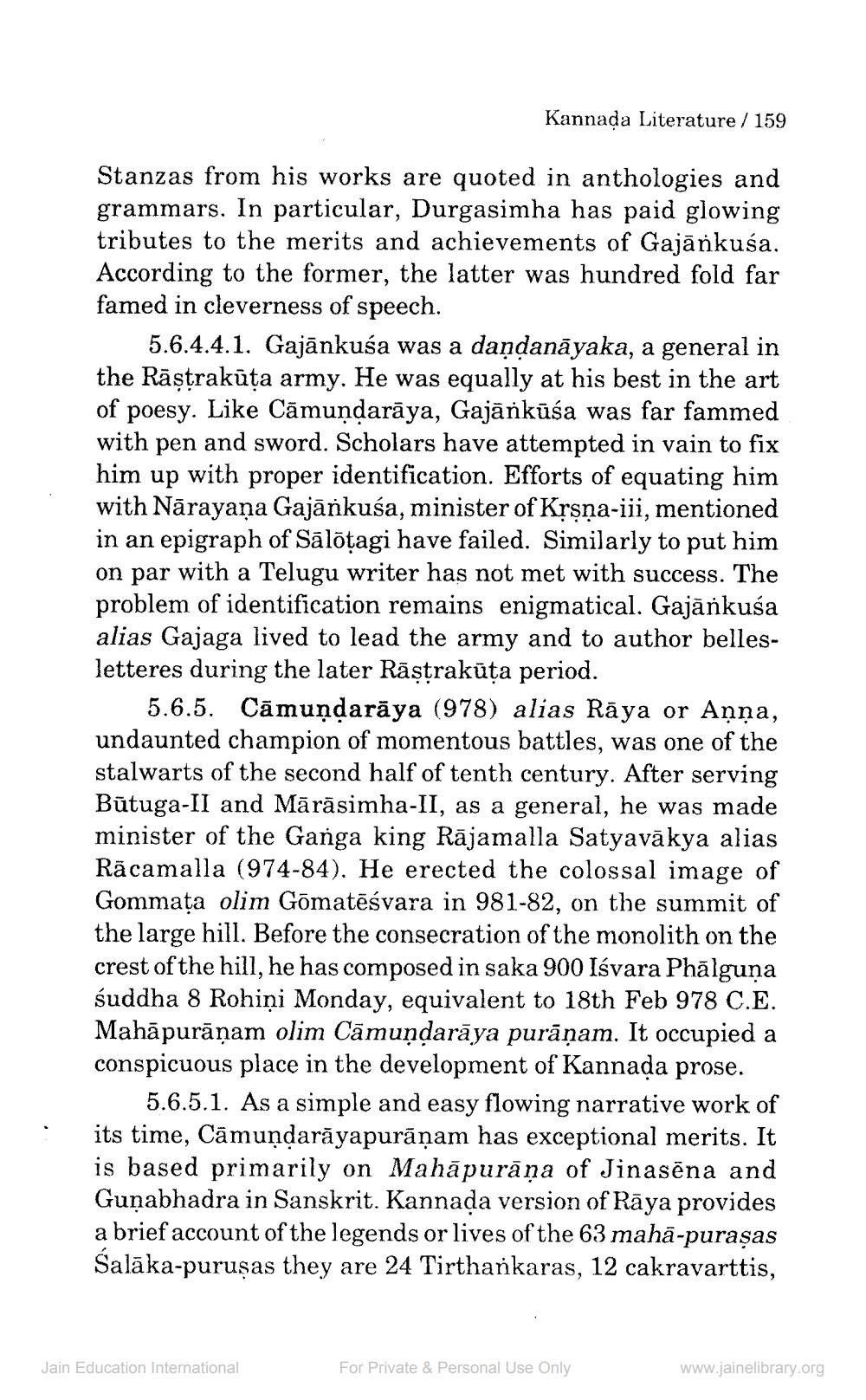________________
Kannada Literature / 159
Stanzas from his works are quoted in anthologies and grammars. In particular, Durgasimha has paid glowing tributes to the merits and achievements of Gajānkusa. According to the former, the latter was hundred fold far famed in cleverness of speech.
5.6.4.4.1. Gajānkuśa was a daņdanāyaka, a general in the Rāstrakūta army. He was equally at his best in the art of poesy. Like Cāmundarāya, Gajānkūsa was far fammed with pen and sword. Scholars have attempted in vain to fix him up with proper identification. Efforts of equating him with Nārayana Gajārkusa, minister of Krsna-iii, mentioned in an epigraph of Sālõțagi have failed. Similarly to put him on par with a Telugu writer has not met with success. The problem of identification remains enigmatical. Gajānkusa alias Gajaga lived to lead the army and to author bellesletteres during the later Rāştrakūta period.
5.6.5. Cāmundarāya (978) alias Rāya or Anna, undaunted champion of momentous battles, was one of the stalwarts of the second half of tenth century. After serving Būtuga-II and Mārāsimha-II, as a general, he was made minister of the Ganga king Rājamalla Satyavākya alias Rācamalla (974-84). He erected the colossal image of Gommata olim Gõmatēśvara in 981-82, on the summit of the large hill. Before the consecration of the monolith on the crest of the hill, he has composed in saka 900 Isvara Phālguna śuddha 8 Rohiņi Monday, equivalent to 18th Feb 978 C.E. Mahāpurāņam olim Cāmundarāya purāņam. It occupied a conspicuous place in the development of Kannada prose.
5.6.5.1. As a simple and easy flowing narrative work of its time, Cāmuṇdarāyapurāņam has exceptional merits. It is based primarily on Mahāpurāņa of Jinasēna and Gunabhadra in Sanskrit. Kannada version of Rāya provides a brief account of the legends or lives of the 63 mahā-purașas Salāka-puruşas they are 24 Tirthankaras, 12 cakravarttis,
Jain Education International
For Private & Personal Use Only
www.jainelibrary.org




